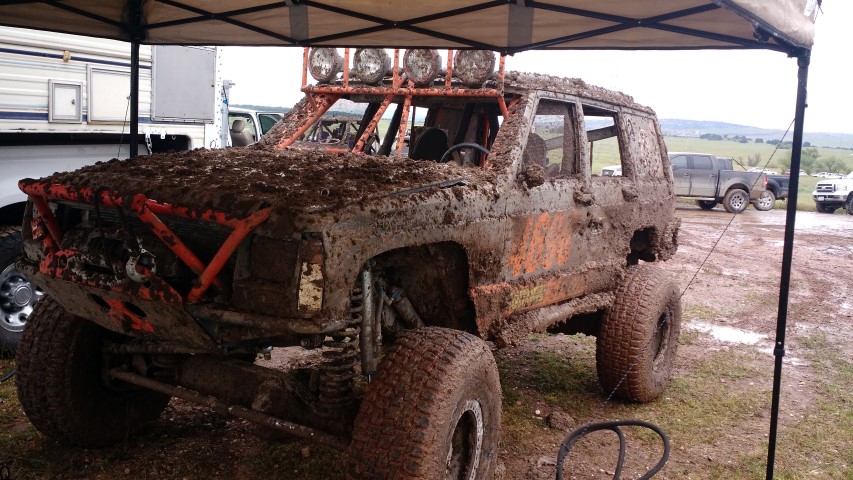- Location
- Hammertown, USA
They've finally caught on to just how little work you actually do?
build threads don't update themselves.
They've finally caught on to just how little work you actually do?
Can't be away from work that long right now.
You probably don't want the MWC as a pit crew anyway.
red 'having ice cream' heep


You shoulda said something. The nitrogen setup is sitting about 15' away from your car right now.Shocks (I should change shock fluid, but I don't, as I am not tooled to recharge them).
Thats from memory. A bunch of other things will come up as you go through the car. I spend a few hours a night on it, and a few long weekends (mine are all 3 day). I know a lot of the desert race teams go a lot further than I do, but their races are longer than ours.
What's involved in changing shock fluid? I know in some way nitrogen is involved? I have a tank for pressure testing its not that involved. I really enjoy this thread.
It's fairly straightforward. Discharge the shock by pressing in on the schrader valve, then open it up and dump out all the oil. Usually we put all new seals and such in at this time as 90% of the work is already being done. Inspect the valving shims and replace if they are getting worn out, dump new fluid in, reassemble, and recharge with nitrogen.
The only reason most people can't do this at home is because they don't have the nitrogen setup. The shocks get charged to around 200PSI. Nothing real special about it, but you do need a tank, high pressure regulator, and proper hose and fill valve.
How much did the regulator run, out of curiosity? I've got a couple of motorcycle shocks to rebuild and the only thing I can't do myself is charge them and you live too damn far away. :confused1
How much did the regulator run, out of curiosity? I've got a couple of motorcycle shocks to rebuild and the only thing I can't do myself is charge them and you live too damn far away. :confused1
Our tire servicing kits are calibrated. When they fail calibration, which is a pretty tight tolerance, they go to DRMO. I bet if you looked around some gov auction sites you could get them pretty cheap. They'd be more than accurate for what you guys were trying to do.
Can you get an NSN on it so I can keep my eye out?
Our tire servicing kits are calibrated. When they fail calibration, which is a pretty tight tolerance, they go to DRMO. I bet if you looked around some gov auction sites you could get them pretty cheap. They'd be more than accurate for what you guys were trying to do.
Not sure what all is in your tire servicing kits, but a normal nitrogen regulator doesn't do the pressures needed in a shock, and I can't imagine any tires needing 2-300psi.
As for cost, it's been so many years I can't remember.
Not sure what all is in your tire servicing kits, but a normal nitrogen regulator doesn't do the pressures needed in a shock, and I can't imagine any tires needing 2-300psi.
As for cost, it's been so many years I can't remember.
